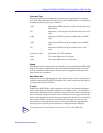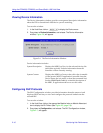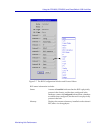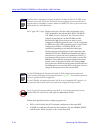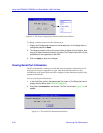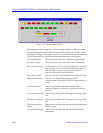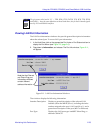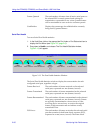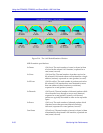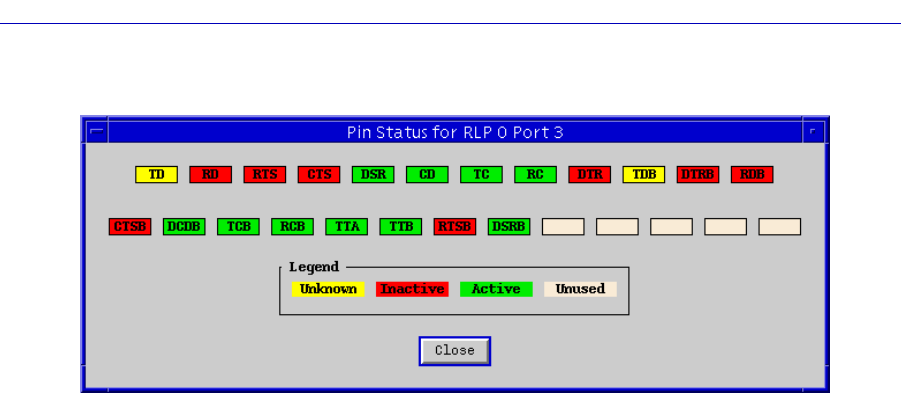
Using the FRX4000, FRX6000, and SmartSwitch 1800 Hub View
2-22 Monitoring Hub Performance
Figure 2-10. The Pin Status Window
Each cable pin is represented by a colored rectangle labeled with the pin name;
the color-coding tells you whether the pin is active (green; has voltage), inactive
(red; has no voltage), unused (tan, or no color), or its electrical status is unknown
(yellow). Each serial port provides information about the following pins:
TD (transmit data) Pin will be active when the connection is operational.
RD (receive data) Pin will be active when the connection is operational.
RTS (request to send) For some protocols, the pin will become active when the
device wishes to send some data, and become inactive
once the data is sent; for a point-to-point protocol,
however, the pin will always be active.
CTS (clear to send) The receiving device has responded to a request to send.
DSR (data set ready) When active, indicates that the remote data
communications equipment (DCE) has signalled that is it
ready.
CD (carrier detect) When active, indicates that the connected line is
operational (that is, a dial tone or similar indication is
present).
TC (transmit clocking) When active, indicates that clocking is occurring on the
link.
RC (receive clocking) When active, indicates that clocking is occurring on the
link.
DTR (data terminal When active, indicates that the data terminal equipment
ready) (DTE) is ready.
TTA (transmit timing) When active, indicates that timing frames are being
transmitted.




